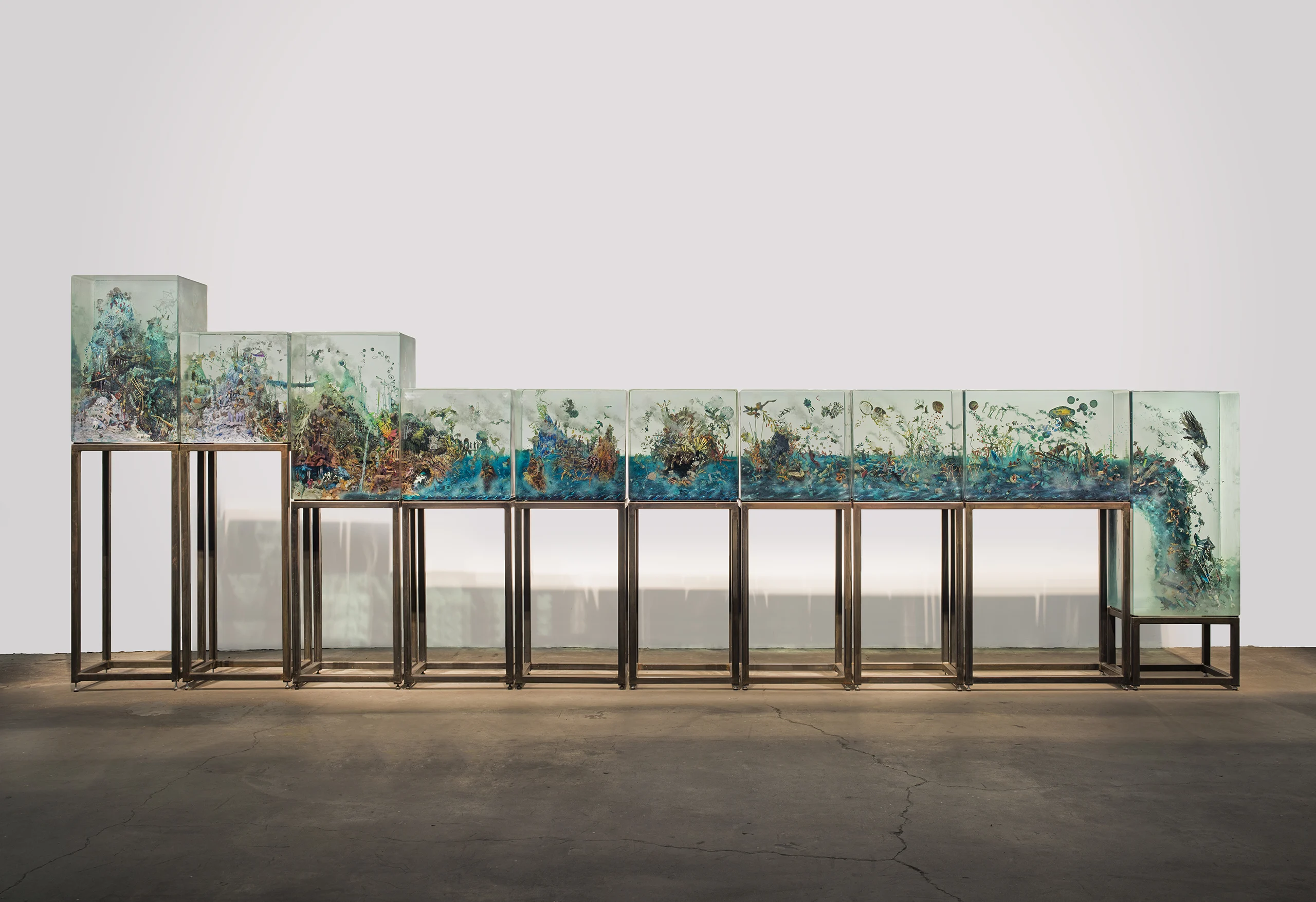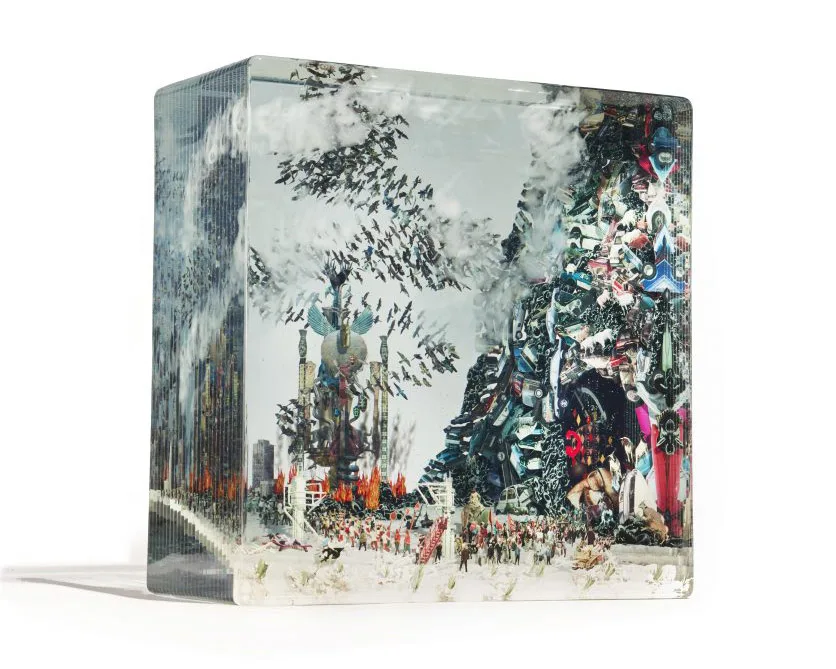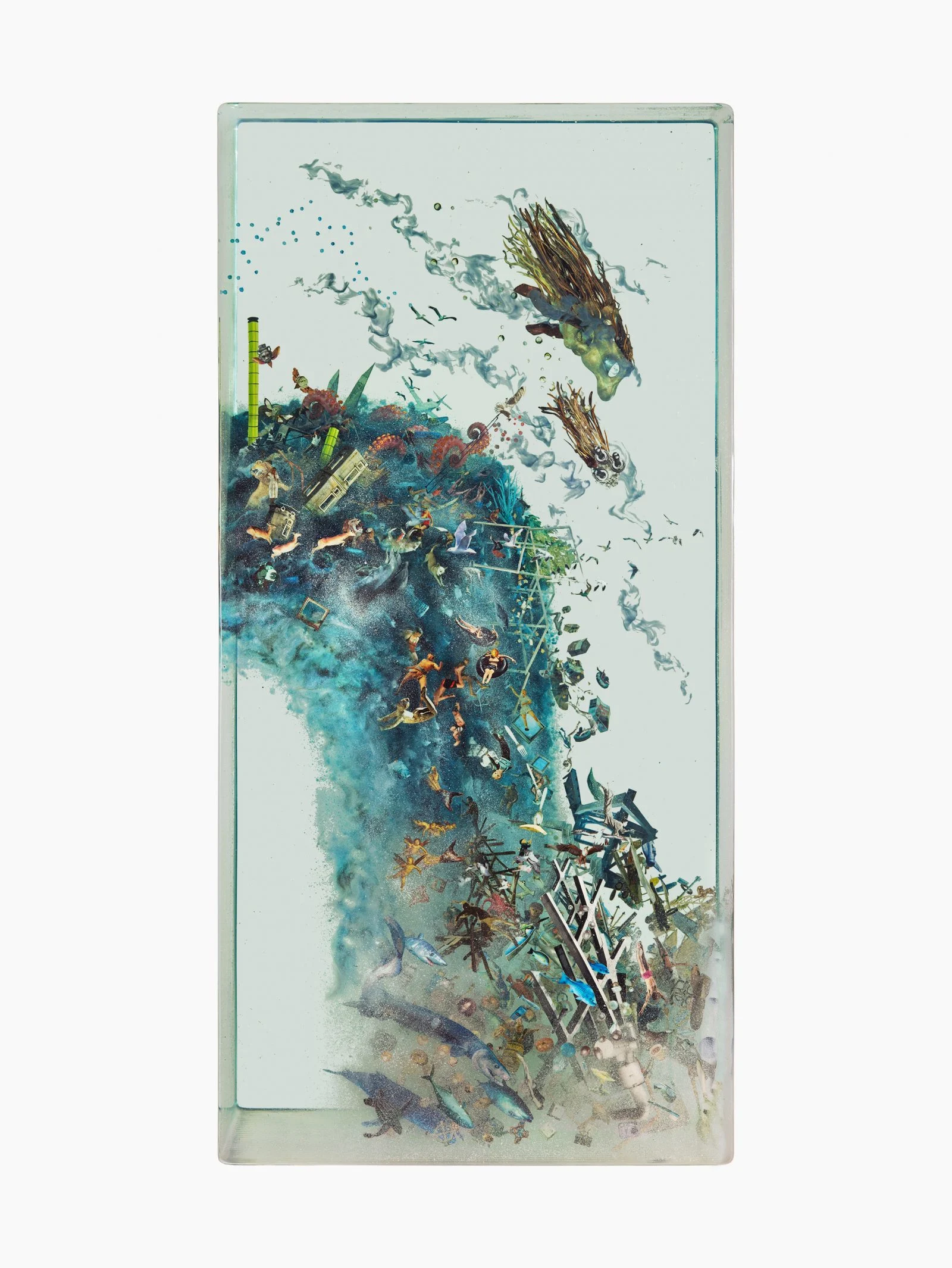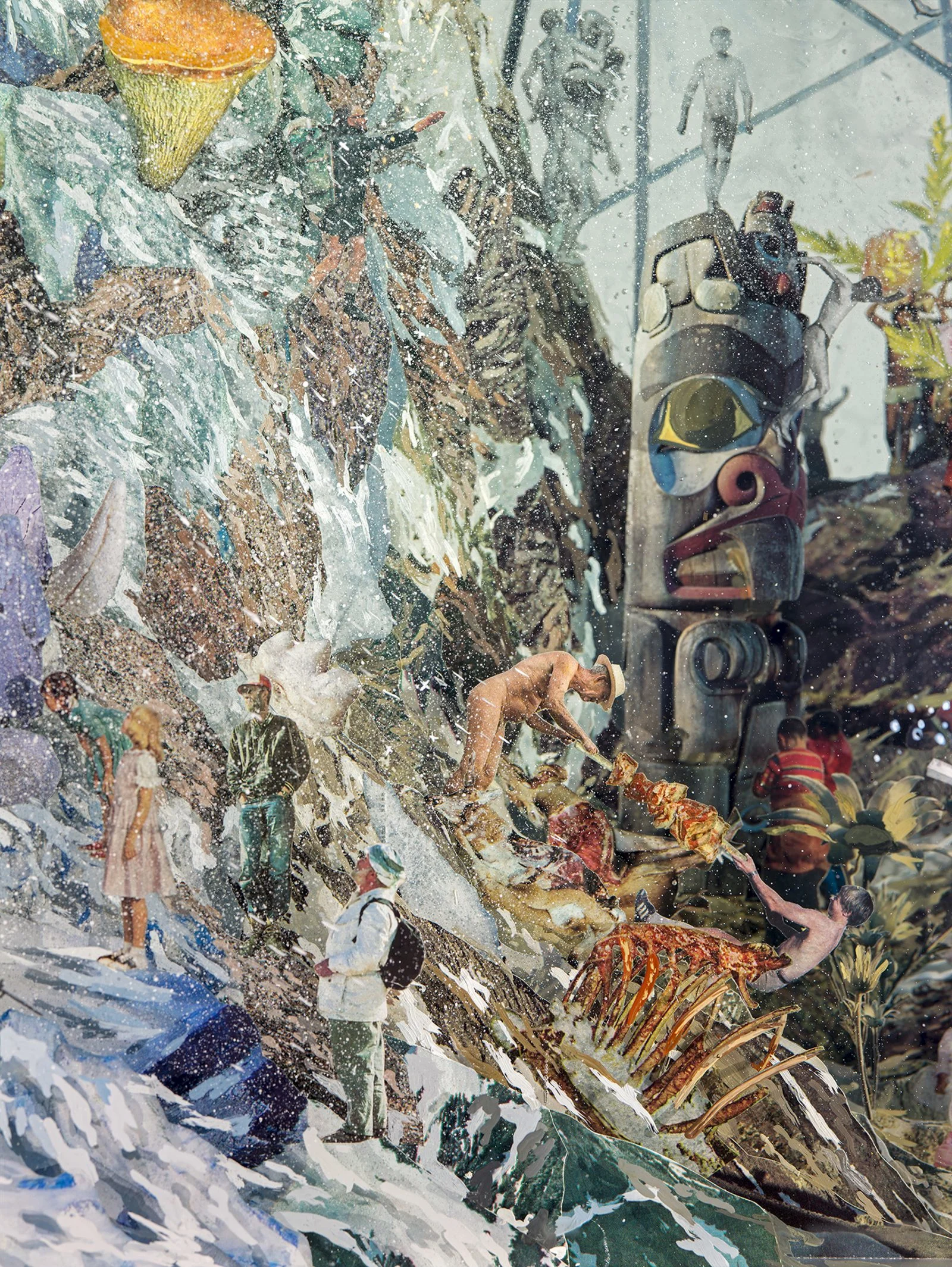

It is hard to imagine there was a time when people believed the earth was flat; that if you sailed far enough you'd eventually fall off the edge. American artist Dustin Yellin built a sculpture that gives the world a beginning and an end too.
10 Parts is a huge sculpture, made out of glass layers glued on top of each other, with each layer filled with amazingly detailed worlds. Dustin’s work can be viewed as a humongous collage, but whereas regular collages are flat, he has built a whole 3D model by putting imagery on each layer of glass.

The artwork shows you the story of the world, from the beginning to the end.
“So I started with the creation of earth, the next phase is the populating of the earth, then you move onto where the land meets the sea and the islands and sea falling off the edge of the world which is a reference to the times when people thought the earth was flat,” Dustin explains.
The last panel indeed shows people, animals and other objects tumbling over the brink. That is not to say Dustin’s sculptures depict doomsday or the ending of our species. “It’s just a shift. It might be a major correction. Maybe we’re going to go from seven to eight billion people to three billion and we’d have to rebuild. Maybe we’ll be in space,” Dustin ponders.

Instead, 10 Parts hides thousands of gorgeous mysteries that you want to unravel piece by piece, noticing new micro-cosmoses with every look. I even discovered a crocodile walking a buggy on closer inspection.
It is as if he has captured our universe in a huge glass box, freezing time and space in one. But Dustin’s subject is not only about one space and time or humanity as is right now; it is about humanity throughout history. Everywhere you can find references from ancient cultures, religions, the arts and so on. It’s a complete remix of the world we know, have known in the past and a vision of our future.
You have to keep going within these worlds, discovering worlds within worlds within worlds.
“What I’m trying is to trap consciousness. So if I smooshed your brain in my hands but instead of seeing your brains I would see memories, time, experiences, like the history of you and the history of the species through your genetics and biology.
“You have to keep going within these worlds, discovering worlds within worlds within worlds,” Dustin says.

His glass sculptures consist of paper and paint. He has an extensive library filled with books and magazines featuring topics ranging from art history to stones. “The whole collage is made up of real media – so it’s not printed from the internet. I like to think that when, in 200 years, paper is gone these are sporadic archives of our species in our media,” Dustin explains.
By combining these wide range of topics and pulling them out of their original context, he repurposes the images’ meaning, building a new story as he goes.
Dustin experiments with smaller glass plates to test one part of the larger whole. What he calls sketches are actually amazing stand-alone artworks. “These are all sketches from moments that will happen in future large works,” says Dustin.

His works are so incredibly detailed that they can feel overwhelming at times. Seeing them once will not give you the sense you’ve fully grasped the story he’s telling – it takes probably hours of studying every separate element to get to the essence of it. And still you might feel drowned in the bombardment of imagery.
But maybe this flood of images is also one of Dustin’s main concerns with the world we find ourselves in. “I think we live in a constant state of being overwhelmed, especially now with the internet. My sculptures are almost like an analogue internet, right? I think I go through life completely overwhelmed, by everything, all of the time. This is almost like a picture of that.”
In this way 10 Parts can be seen as a reflection of what is going on in Dustin’s brain day in and out, or maybe even “the brain of humanity,” as Dustin says.
Layer for layer for layer Dustin paints a slightly terrifying, yet beautiful account of his mind, his worldview and our universe.


